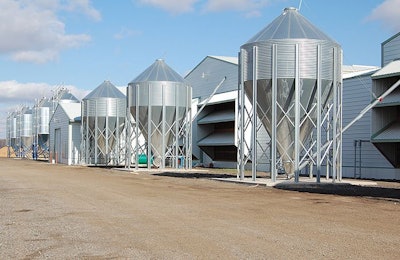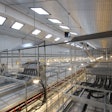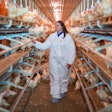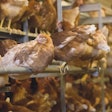
Cage-free housing legislation that mandates sale of only cage-free eggs has been passed in six U.S. states -- California, Washington, Oregon, Rhode Island, Massachusetts and Michigan -- which were home to an estimated 21.2% of Americans in 2019. Implementation dates of these cage-free egg sale requirements range from January 2022 to January 2026.
IRI recently reported that 13% of total U.S. retail shell egg sales are cage-free eggs. If we assume retail cage-free egg sales in the six states that have passed legislation match the national average, then conversion of these sales to cage-free eggs would require an additional 42 million cage-fee hens by January 2026. Conversion of egg and egg products for foodservice and processed food products to cage-free eggs for these six states would require more cage-free hens in addition to the 42 million for shell egg sales.
Cage-free egg sale legislation is also being considered in Maine, Hawaii, Arizona and Colorado, which collectively are home to 4.8% of Americans.
Adding cage-free production
The U.S. Department of Agriculture (USDA) Agricultural Marketing Service (AMS) estimated that on December 1, 2019, the U.S. had 70.82 million cage-free hens (including hens in organic programs). During the preceding 12 months, the U.S. cage-free layer flock increased in size by 13.66 million hens. In the period from December 2016 to December 2019, the U.S. cage-free layer flock increased by 33.22 hens. Over the same time period, the USDA estimates that the total U.S. table egg laying flock increased by 29 million hens. This indicates that, so far, the U.S. egg industry isn’t “converting” to cage-free housing as much as it is “adding” cage-free housing.
More caged than cage-free
Thirty-five U.S. egg producers that collectively house 187 million hens gave written responses to Top Egg Company Survey questions. U.S. egg producers were asked how they thought hens in the U.S. will be housed in 2025. The average of the 32 responses to this question is that cage-free hens would make up 44% of the country’s layer flock in 2025.
The U.S. cage-free layer flock represents 20.8% of the total U.S. table egg layer flock, which was estimated to be 340.5 million on December 1, 2019, by the USDA. On December 1, 2016, the U.S. cage-free layer population was estimated to be 12.1% of the total. If this three-year pace of growth in the number of cage-free hens is continued until December 2025, there would be 137 million cage-free hens in the U.S., or around 40% of the current total layer flock.
The prediction that less than half of the hens in the U.S. will be housed cage-free in 2025 looks like a safe bet at this time.
2030 cage-free prediction
Egg producers were asked to predict how hens on their own farms would be housed in 2030. The average for the 33 responses to this question is that hens will be housed 35% in cages, 58% cage free in a house and 7% free range. Three of the companies that answered this question are 100% cage free.
Egg producers were asked to select the statement that best matched how the state laws that have been passed mandating that eggs sold must be produced by cage-free hens will impact their company’s housing plans. Ten companies said the state laws would result in no change because they are not converting to cage free, 14 said they will accelerate cage-free housing conversion, and nine said they will continue converting to cage-free at the same rate as before.
New construction and cage-free conversions
Top Egg Company survey respondents report building new housing for 5.45 million cage-free hens in 2019. They also reported plans for building space for 7.4 million cage-free hens in 2020. Some survey respondents report that they added buildings for 2.41 million cage-housed hens in 2019. It is probable that the additional cage-housed hens are in convertible or combi systems which can be opened up at a later date and used as aviary systems.
In 2019, survey respondents report converting housing for 1.15 million cage-housed hens to cage-free housing for 1.35 million hens. Survey respondents report plans for converting housing for 4.64 million cage-housed hens to housing for 4.9 million cage-free hens in 2020.
















